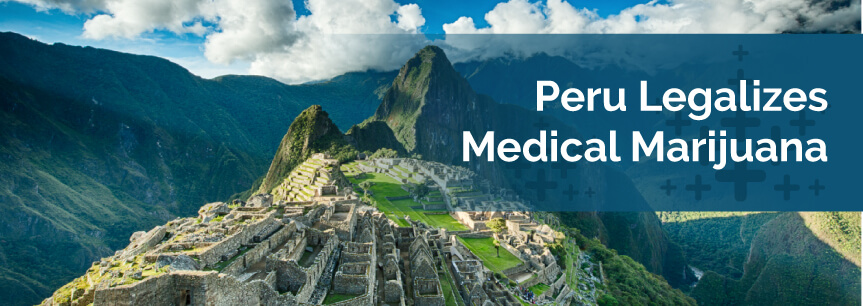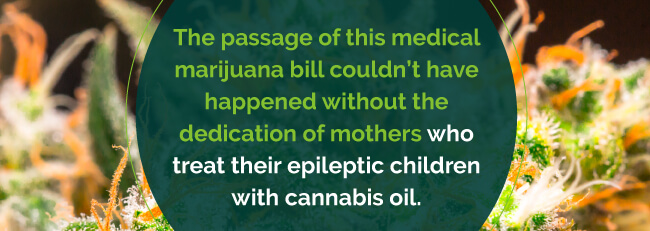
On October 19, 2017, Peru’s government passed a bill to legalize marijuana for medical use. Thanks to local advocacy and scientific research, Peruvian officials understood the importance of medical marijuana and pushed for the freedom to medicate.
Here’s what you need to know about the recent change:
If you keep track of cannabis laws anywhere in the world, you may know they each have specific restrictions. While some places allow many ways to use marijuana, others only permit certain products or methods of ingestion. The new Peruvian bill works similarly.
Although many say Peru has legalized medical marijuana, they don’t mean Peru sanctioned any medical marijuana product. In fact, the bill only considers cannabis oil — not the plant itself or other kinds of marijuana medicine.
And as we learned in the quick facts mentioned above, lawmakers haven’t decided on the details yet. Some of the questions they’ll think about when they write the law include:
Another topic to consider is whether Peru will allow cannabis oil containing THC. The anti-drug organization CEDRO, one of the bill’s critics, refuses to support the bill if it permits cannabis oil with THC in it. They worry THC could have a negative impact on children’s health.
The passage of this medical marijuana bill couldn’t have happened without the dedication of mothers who treat their epileptic children with cannabis oil. Their advocacy became the turning point for this critical legal advance.

Buscando Esperanza (Searching for Hope) is an advocacy group founded by two mothers whose children experienced the healing power of marijuana firsthand. When other treatments wouldn’t work, they found cannabis oil helped their sons deal with fewer seizures. More than 200 additional members joined them in their cause.
The group not only holds demonstrations to support legalization, but they also have some members who handle and administer medical marijuana. Ana Alvarez, one of the founders of Buscando Esperanza, creates her own cannabis oil and helps other patients medicate with it. Dr. Juan Lock operates out of an informal practice next to Alvarez’s home, where he also creates and recommends the medication.
However, Peruvian police raided Alvarez’s home in February 2017. This incident raised awareness about Buscando Esperanza’s cause and fostered sympathy for them. In response to the public reaction, President Pedro Pablo Kuczynski began the process of introducing the legalization bill.
The Peruvian people’s compassionate response to the raid on Alvarez’s place reflects what data suggests. Ipsos polled citizens about their views on medical marijuana in early 2017, and 65% of the participants who were comfortable with sharing their opinion approved of legalization.
If public opinion can serve as a good indicator of the likelihood of federal legalization, the United States is in pretty good shape. About 83% of Americans polled by Yahoo and Marist said doctors should have the ability to prescribe marijuana medicine. Around 49% of those surveyed also approved of legalizing recreational use.
However, while 29 states and D.C. currently offer medical marijuana programs, the federal government still considers marijuana an illegal Schedule I drug. Would an incident like the Buscando Esperanza raid change their minds? It’s hard to tell, especially with a conservative-majority American government.
The extent to which legalization will help Peruvians with chronic conditions depends on the nature of the laws drafted in December. After all, we currently know that only cannabis oil can be legally produced and commercialized.
However, even if they permit only CBD oil and for seizure-related conditions alone, the bill will bring many patients one step closer to relief. After all, seizure disorders are challenging to treat and have a high impact on the patient’s quality of life. Research and patient anecdotes indicate CBD works effectively to reduce the frequency and severity of seizures.
If the law expands to accept more types of medicine, even more Peruvians can experience natural relief. For instance, THC works in tandem with CBD to relieve pain more effectively. Plus, having medication options lets patients adjust their treatment plan to suit their lifestyles and symptoms.
In the past few years, we’ve seen an exponential increase in the number of countries where people can legally medicate with marijuana. Australia, Jamaica, Ireland, Germany and Canada all legalized medical marijuana in 2016, with Canada legalizing recreational use, as well.
When any country liberalizes their marijuana regulations, cannabis awareness and research increases. For instance, Israel, a global leader in marijuana research, was one of the first nations to authorize medical use. More research means more evidence supporting cannabis’ medicinal properties, which makes it easier for advocates to push legalization in other countries.
Additionally, depending on whether Peru will be able to export marijuana or not, its new laws could further make a case for cannabis as an economy booster. The medical marijuana industry is booming all over the world, and Peru lies adjacent to three countries that also permit medical cannabis. If the legislation were to enhance the area’s trade, other countries could have more motivation to legalize cannabis medicine.
At MarijuanaDoctors.com, we regularly update our blog with news and updates on marijuana medicine like this post. If you need to brush up on your cannabis IQ, we also have a huge library of resources documenting what marijuana can do for patients in need of relief.
No Information on MarijuanaDoctors.Com should be used to diagnose, treat, prevent or cure any disease or condition. You can view our Full Disclaimer here.